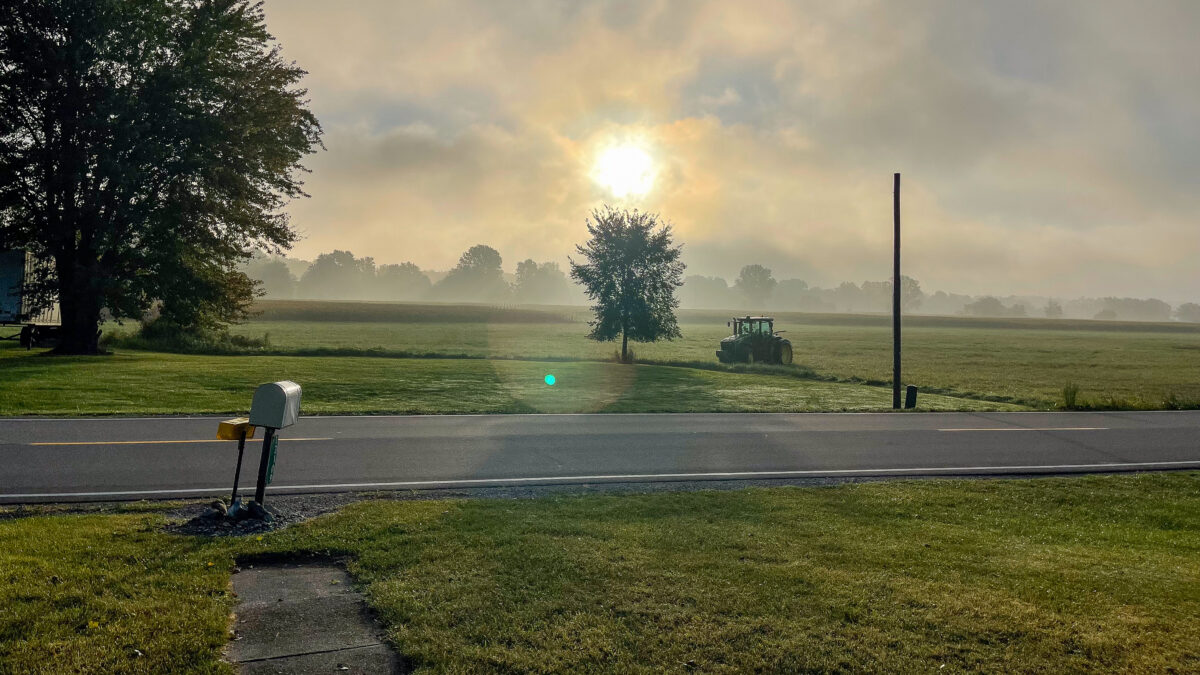Climate-Smart Practices Commonplace on Today’s Farms
Cyndie Shearing
Director, Communications

photo credit: AFBF Photo, Morgan Walker
Cyndie Shearing
Director, Communications
Farmers and ranchers are leading the way in climate-smart practices that reduce emissions, enrich the soil and protect our water and air, all while producing more food, fiber and renewable fuel than ever before. In fact, U.S. agriculture would have needed nearly 100 million more acres in 1990 to match current production levels.
This is due in large part to U.S. farmers proactively managing and preserving soil by planting more cover crops, increasing conservation tillage and expanding use of no-till methods. These practices help conserve soil while preserving and increasing nutrients and improving water quality. They also trap excess carbon in the soil and reduce greenhouse gas emissions.
More broadly, sustainable soil use and resource conservation efforts increased by 41 million acres in 10 years. And an impressive 20% of all U.S. farmland is used for conservation and wildlife habitat.
Let’s “dig in” to some of these concepts.
Cover Crops
A cover crop is any crop grown to cover the soil and may be incorporated into the soil later for enrichment. Cover crops can improve soil health and water quality, increase carbon sequestration, help control pests and disease, improve biodiversity and more. They also improve long-term productivity and efficiency – assisting in water retention. This allows farmers to better protect their crops and more effectively utilize fertilizer and crop protection products during the growing season.
Annual ryegrass, oilseed radish, winter cereal rye and oats are examples of crops used for seasonal cover and other conservation purposes.
U.S. farmers increased their use of cover crops by 8 million acres (+75%) over the past 10 years.
Conservation Tillage
Conservation tillage is the use of tillage methods that disturb the soil less than “conventional” tillage. In addition to reducing erosion and preserving soil moisture, conservation tillage can reduce farmers’ production costs by reducing the use of fuel, labor and tillage machinery.
U.S. farmers increased their use of conservation tillage by 20 million acres (+20%) in the past 10 years.
Farmers and ranchers are leading the way in climate-smart practices.
No-Till Farming
No-till farming is defined as the absence of tillage operations from harvest of the previous crop to harvest of the current crop. More simply, farmers do not till their fields before planting. Instead, they use specialized equipment to create a channel that is just spacious enough for seeds to be planted, which minimizes soil disturbance. No-till can minimize wind and water erosion and protect soil from high temperatures and moisture loss. In addition, organic matter from previous crops enriches the untilled soil.
No-till conservation acreage in the U.S. increased by 9 million acres (+9%) in the last 10 years.
More Food and Farm Facts
Interested in more facts about farming? Order your copy of Food and Farm Facts, a publication from the American Farm Bureau Foundation for Agriculture.
“Food and Farm Facts gives you a snapshot of how and why farmers and ranchers do what we do to produce food, fiber and renewable fuel. America’s farmers and ranchers take great pride in what we do and it’s an honor to serve our communities and our nation every day,” explained Foundation Chairman Zippy Duvall, who also serves as president of the American Farm Bureau Federation.
The 32-page, full-color book features hundreds of updated agriculture facts and easy-to-read graphics organized into sections: Consumers, Modern Farmers, Trade & Economics, Environment and Production.
Cyndie Shearing is a director of communications at the American Farm Bureau Federation.
Top Issues
VIEW ALL